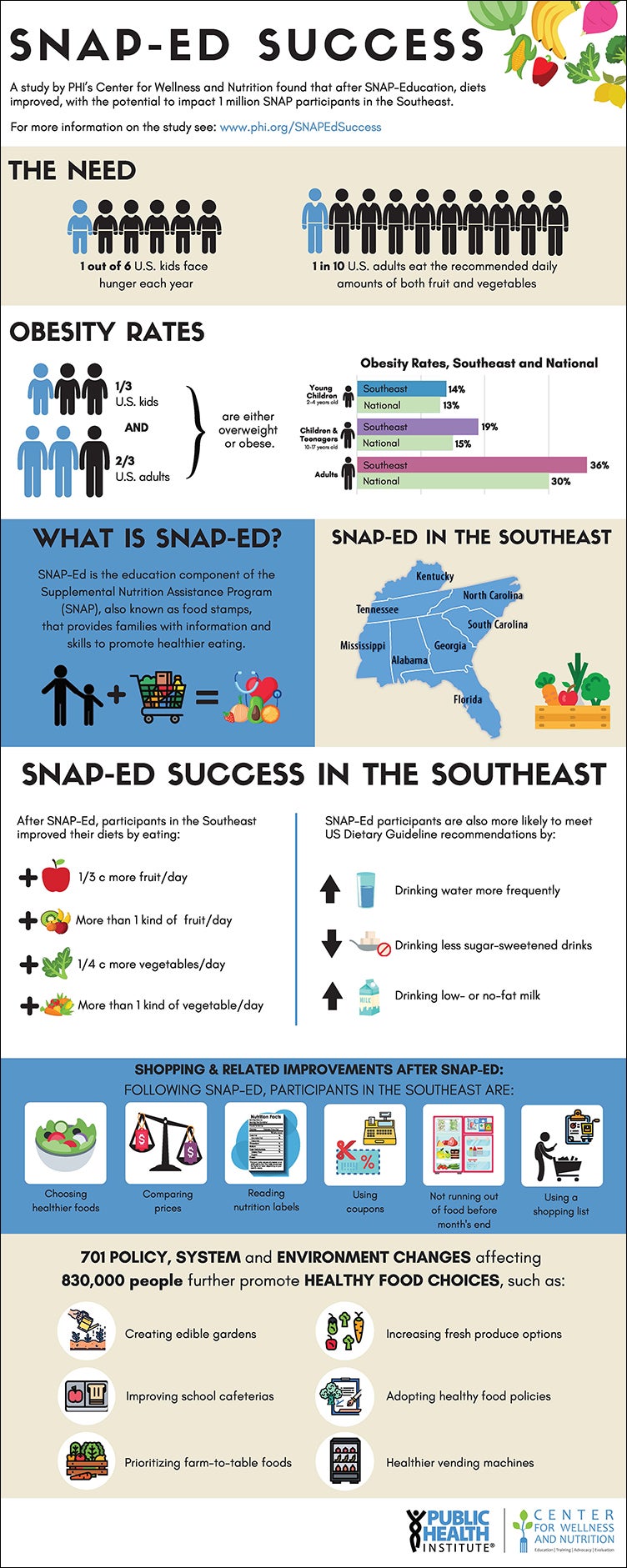SNAP-Ed program good for low-income residents in Southeast
Published 2:38 pm Wednesday, September 30, 2020
|
Getting your Trinity Audio player ready...
|
 A new study conducted by the Public Health Institute’s (PHI) Center for Wellness and Nutrition (CWN) found that low-income residents in eight Southern states, where obesity rates are among the highest in the nation, consumed more fruits and vegetables and improved shopping and nutrition-related behaviors following participation in the U.S. Department of Agriculture’s (USDA) Supplemental Nutrition Assistance Program Education effort, SNAP-Ed.
A new study conducted by the Public Health Institute’s (PHI) Center for Wellness and Nutrition (CWN) found that low-income residents in eight Southern states, where obesity rates are among the highest in the nation, consumed more fruits and vegetables and improved shopping and nutrition-related behaviors following participation in the U.S. Department of Agriculture’s (USDA) Supplemental Nutrition Assistance Program Education effort, SNAP-Ed.
The education program provides nutrition education and obesity prevention interventions to vulnerable populations – individuals and families at or below 185 percent of the federal poverty level.
The new study examined data collected in 2017 from participants in 25 different SNAP-Ed programs in Alabama, Florida, Georgia, Kentucky, Mississippi, North Carolina, South Carolina and Tennessee, which is considered part of the USDA’s Southeast region and has the country’s highest share of residents, more than 15 percent, receiving SNAP benefits.
The study evaluated surveys from more than 43,000 low-income children, adolescents and adults before SNAP-Ed and contrasted it to findings uncovered after taking part in the program.
The study found that, following participation in a SNAP-Ed program, people increased daily fruit consumption by about one-third of a cup and increase vegetable consumption by about a quarter of a cup.
Additionally, participants drank water more frequently, reduced their consumption of sugar-sweetened beverages and drank low- or non-fat milk.
Further, participants were also found to choose healthier foods on a budget, read nutrition labels and ingredient lists, compare prices before purchasing groceries, identify foods on sale or use coupons, utilize a shopping list and not run out of food before the end of the month.
“Healthy foods can be expensive and a SNAP budget is modest,” said Amy DeLisio, Director of the CWN and a co-author of the study. “But SNAP-Ed is helping low-income Americans in the Southeast make strategic choices that stretch their food dollars and empower them to choose more fruits and vegetables and other healthy foods. In the long run, these changes can play an important role in reducing their likelihood of diabetes, hypertension and other nutrition-related diseases and in reducing healthcare costs across the region.”
In addition to dietary and nutrition improvements, the study documented 701 policy, systems and environment (PSE) supports adopted across the Southeast, which reach about 830,000 people, that promote healthier choices among low-income families through efforts such as creating edible gardens, improving food displays in school cafeterias, promoting farm-to-table foods, increasing fresh or local produce options, implementing standards for healthier food policies and adopting school or childcare wellness policies.”



